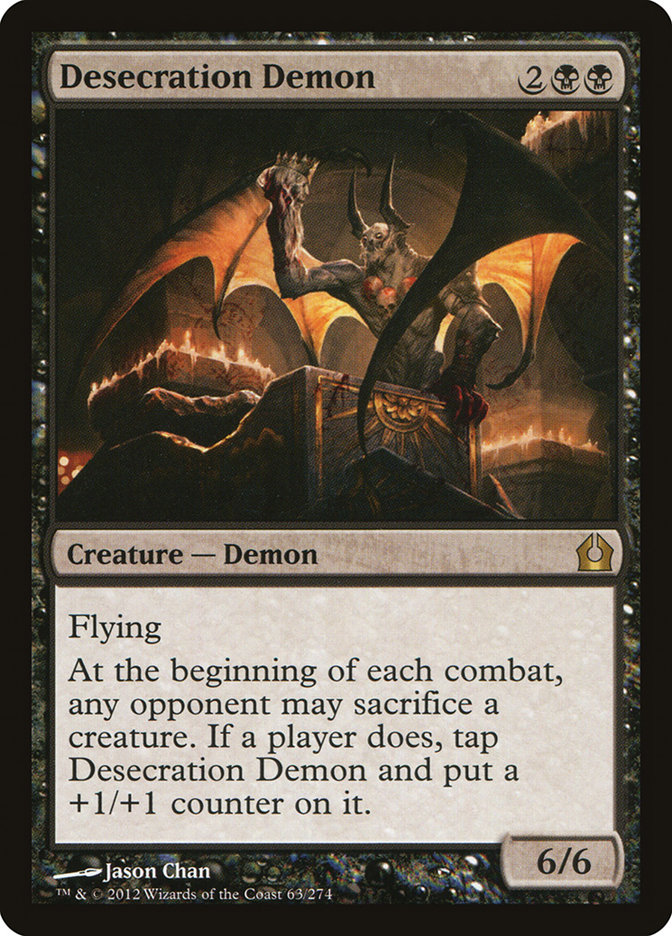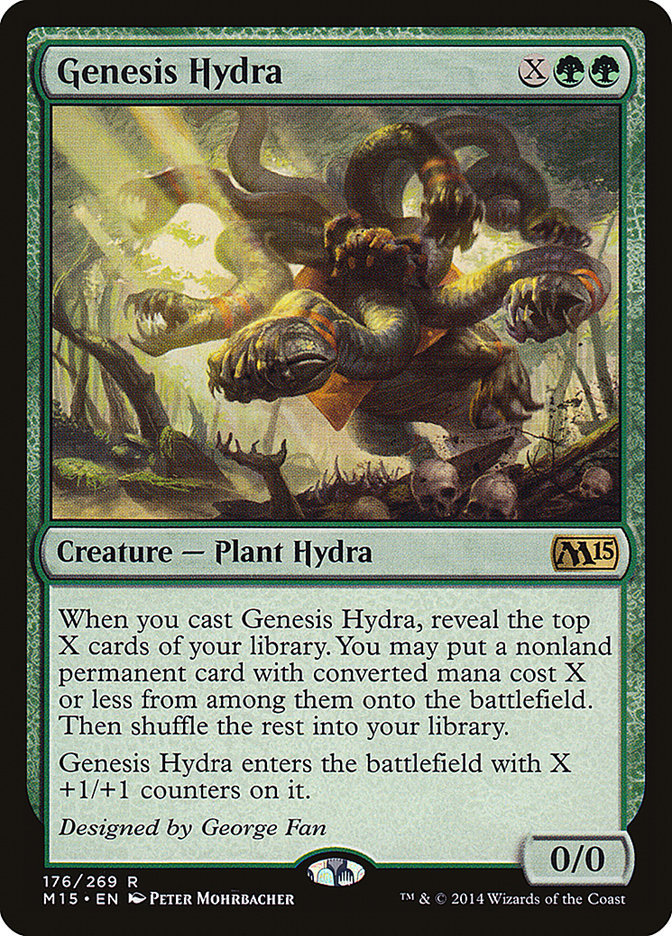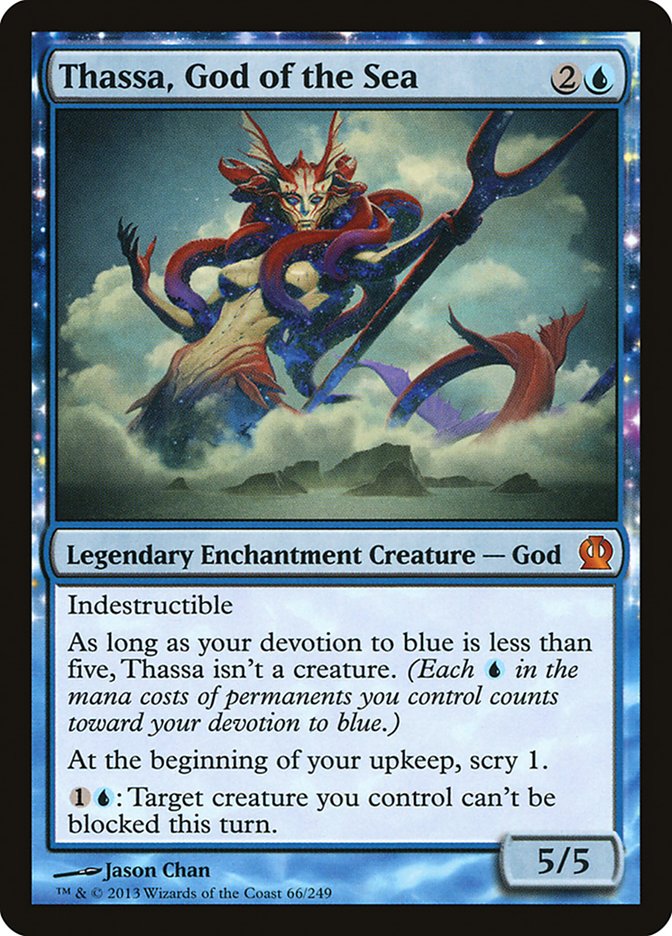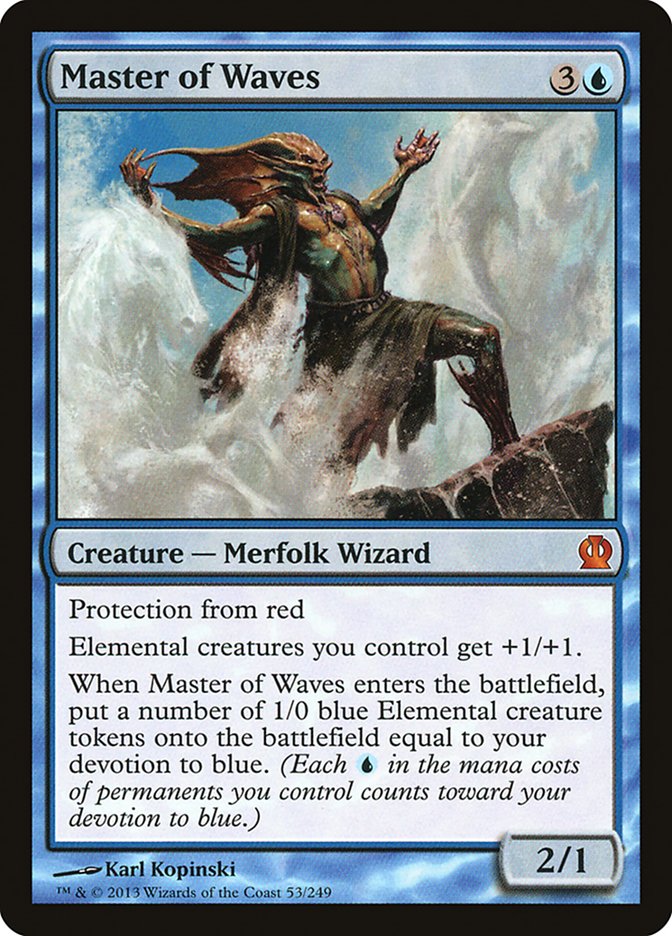I’m diving into Standard in earnest now, with the first major event to feature Magic 2015 in the books. While I expected the new set to have very little impact, it wound up having a little less than even I expected in this first week out, so I’m looking forward to seeing the next iteration.
I could hash through the decklists of the weekend, but truthfully I expect you’ll see plenty of other people doing that, and most of you have already seen them and divined for yourself what information remained there. Instead, I’m going to walk you through some of the angles that I consider to be most important when considering the new format and how we should be looking at it moving forward.
Standard’s the format I’ve been least familiar with over the last few months which means I’ve spent a couple weeks catching up. Now, I’m looking to move forward and integrate the results of Baltimore and Kansas City with my own results and inferences. Whenever I’m assessing a format for opportunities, I look for a few different things. This is the exact process I go through whenever I’m building a deck for any event, and it’s no different for Magic 2015.
1) What threats are popular?
2) Which answers are popular?
3) How do you match your threats against their answers?
Usually, I just think these things over while I brew. Sometimes, I go as far as writing down the cards that intersect the most favorably by color, allowing that to guide me in one direction or another. Today, I’m going to run through this list and see if it can help direct all of us towards some answers for how best to maneuver into position in this Standard format.
Note: For the purpose of this exercise, I’ll be going simple and trying to avoid diving into niche cards or splashes that aren’t uniformly accepted at this time. If you get bored, congrats! You know Standard better than me, and it’s a real shame the sequencing of the PTQ seasons aren’t lining up favorably for you. Feel free to share your knowledge.
Popular Threats
While any creature qualifies as a threat, the cards I’m specifically interested in are the haymakers that push one player past another within the game. These cards are the lynchpins in each deck’s offensive, the ones they build their game plan around when they draw them. A quick example based on a few big decks:
* Mono-Black Devotion: Pack Rat, Desecration Demon, Underworld Connections
* Mono-Blue Devotion: Thassa, God of the Sea, Master of Waves
* Revelation-Based Control: Jace, Architect of Thought, Sphinx’s Revelation, Elspeth, Sun’s Champion
* Jund Monsters: Polukranos, World Eater, Stormbreath Dragon
* Mono-Green Devotion: Nissa, Worldwaker, Garruk, Caller of Beasts, Genesis Hydra
It’s easy to understand how many of these function as game-ending plays, but some are more obvious than others.
Mono-Black often plays three kinds of games: Pack Rat goes unanswered, Desecration Demon gums up the board and turns the game into a favorable grind, or Underworld Connections enables an easy attrition victory. There’s a fair amount of overlap; a turn 4 Connections often fuels a turn 5 Pack Rat, and Connections is an integral part of ensuring your Demon doesn’t get overwhelmed. Any one of these three pieces is capable of winning a game without the other, however, depending upon the matchup.
Mono-Blue has the alternate route of “tiny dudes beat you to death” as well, of course, but more often than not it comes down to these Theros mythics. They’ve both got forms of protective text and both break open boards in the caster’s favor; it’s difficult to position your removal against small creatures that are complemented by Nightveil Specter while also retaining the ability to remove either Master or Thassa. And while Specter is a strong card, I don’t consider it a “haymaker” out of Mono-Blue; it’s just an efficient guy.
I use Jace and Revelation in the control example because these are the cards that you have to orient yourself to fight, and they’re also the cards control uses to land the knockout punch. Building your deck to fight off an Aetherling? Pointless. Building your deck to control the three cards above? Highly relevant!
Furthermore, consider the difference between Polukranos in Jund Monsters and in Mono-Green Devotion. In the former, the combination of removal spells and several forms of pressure alongside Ghor-Clan Rampager and Domri Rade make Polukranos one of the marquee Monsters threats. In Mono-Green Devotion, it’s much more of a midgame role player, bridging the gap between mana dorks and planeswalkers. Yes, it might kill someone, but you don’t structure your entire game around it. A turn or two of planeswalker activations or a giant Genesis Hydra are much more productive in terms of converting contested games into wins.
Most of the aggressive decks employ a variety of creatures that cost three or less and rarely (but occasionally) exceed three toughness, ranging from mono-colored to multi-colored depending upon the deck.
Any deck you play in a tournament should have a direct plan for handling the above cards. In the case of expensive cards, killing the opponent before they can leverage them is a fantastic plan, and planeswalkers often also fall victim to aggressive starts. However, you shouldn’t underestimate the tempo gained by playing a planeswalker in “Renewed Faith” mode. Standard’s a format with a lot of catch-up capacity, and buying a turn is sometimes all anyone needs to reverse the board in their favor.
Of course, any discussion of threats is incomplete without a discussion of answers.
Popular Answers
Let’s repeat our previous exercise.
* Mono-Black Devotion: Thoughtseize, Hero’s Downfall, Bile Blight, Ultimate Price, Doom Blade, Duress, Lifebane Zombie
* Mono-Blue Devotion: Tidebinder Mage, Rapid Hybridization, Cyclonic Rift, Domestication
* Revelation-Based Control: Syncopate, Dissolve, Detention Sphere, Banishing Light, Supreme Verdict, Elspeth, Sun’s Champion
* Jund Monsters: Polukranos, World Eater, Domri Rade, Ultimate Price, Mizzium Mortars
* Mono-Green Devotion: Polukranos, World Eater, Setessan Tactics
Note that some of the cards reappear; Magic cards are versatile like that, sometimes.
Mono-Black has a lot of removal options, but each has a hole somewhere. The sole exception is Hero’s Downfall, which pretty much nabs whatever you want whenever you want, but at the cost of being more expensive than most.
Mono-Blue is such a linear strategy that it rarely has time to interact with the opponent. Most of these cards have a few different modes or niche uses to make up for the fact that a straight-up defensive spell wouldn’t suit the strategy.
Revelation decks tend to offer even more reactive options, but these are the ones to consider most important. Lining your threats up against counterspells, maintaining enough presence to hurt Jace while avoiding a Verdict blowout, and having a plan for Elspeth makes the matchup the Magic equivalent of an obstacle course. To top things off, Sphere and Light can both take care of anything, at least temporarily, although at the cost of often lining up inefficiently against opposing aggressors. The exceptions lie in the Mono-Black matchup, where these cards are perfectly timed.
Jund Monsters is a lot like Mono-Blue in that it doesn’t want to pay much attention to the opponent, but interaction is a necessity. In fact, interaction is one of the reasons to be Jund! Desecration Demon is a lot more troublesome without Ultimate Price or Dreadbore around, and the sideboard options it creates are essential, such as Rakdos’s Return–very nearly a haymaker itself. Domri Rade is obviously the most flexible card here, pressuring control and creature-based strategies alike at a very efficient cost.
Another linear deck, Mono-Green Devotion is mostly hoping to go over-the top in every matchup, making answers unnecessary. However, because things like Mono-Black and Mono-Blue can effectively race or disrupt this strategy, you’ve got to be prepared to play some ball on that level. Frankly, there aren’t that many good cards to play anyway, so it’s not so bad.
Threats vs. Answers
It’s easy to see how the format’s answers have evolved to this state given the format’s threats. The wide range has heavily popularized Spheres, Lights, Thoughtseizes, and Downfalls, while the casting restrictions–be they cost or timing–have created enough space for the format’s haymakers to continue wriggling through the lines.
That’s also why you can see decks like Tom Ross’s Boss Sligh or Andrew Boswell’s G/W Aggro do well–when your opponent is going to spend turns 3, 4, and 5 tapping out to remove your threats, having used turn 1 and 2 to create them gives you a massive tempo lead. These decks are all very large favorites in games where the opponent is trying to reactively create one-for-one exchanges; it’s when the opponent gets a moment to breathe or has a real spell like Drown in Sorrow or Supreme Verdict that things get hairy.
So, how do we dodge these answers? Let’s take a look.
Mono-Black’s tough, because frankly you usually just have to play more guys than they have spells. When they start by sniping with a Thoughtseize and can follow with between eight and twelve removal spells, it can be tricky. Early pressure requires them to stay on the back foot, weakening Pack Rat, but most of these early creatures get shut down by Desecration Demon–you need a plan for the 6/6. If Mono-Black’s on the play, you’ll also want a plan to race the Rat!
Summary: Be cheap and either nimble or tough, with plans to get past Demon and Merchant. It’s easy to get overwhelmed if you’re slow out of the gates and can’t access a stabilizer like Verdict or Revelation.
Mono-Blue has excellent early threats and strong defenders as well in Frostburn Weird and the Master. Being proactive against Mono-Blue is very difficult, and often involves Pack Rat, Legion Loyalist, or an equally efficient curve of creatures that has answers to Thassa or Master of the Waves at the end of the rainbow. Racing Mono-Blue can be very difficult; it’s often correct to assume a reactive stance if you have access to enough disruption, or move all-in on protection from blue.
This is why Mono-Blue flourishes when it’s capable of avoiding Supreme Verdict–few other cards can punish them so fiercely, leaving many other matchups essentially coin flips.
Summary: You’ll rarely be a favorite in the race, but you’ll often be forced to try. Mono-Blue’s rarely worse than a coin flip if the opponent can’t access a sweeper, but it has specific issues with Pack Rat and often even Nightveil Specter.
It’s worth noting that between Lifebane covering expensive green guys and Tidebinder freerolling early triggers on the cheap ones, Wizards clearly hates broccoli enthusiasts and has made their life very difficult.
Approaching U/W Control is a lot like approaching Mono-Black, except instead of being able to race Rat or Demon you need to be able to threaten Jace (or lethal) while maintaining an ability to recover from Verdict. This is a balance, but practicing the matchup will teach you the patterns. Their spells aren’t particularly cheap, meaning you’ll only have to fend off one per turn for the majority of the early game, and ideally you can end the game before it goes late.
The key is tempered aggression–or, when that’s not going to work, reckless abandon to reduce their draws for Verdict. Sometimes they just don’t have it!
Summary: The stronger and more efficient your threats are on an individual basis, the better this matchup gets. Judge’s Familiar? Not so much. Fleecemane Lion? That’s more like it. Flash is also quite good, because it’s one of the best ways to catch up against Verdict and weaken Dissolve.
Jund Monsters is tricky, because as a midrange deck it can adjust pretty wildly to what you’re doing. Polukranos and Domri heavily restrict the kinds of threats you can rely on; too many tiny guys and Polukranos will get you, while putting a lot of mana into anything smaller than the Hydra will get your creature beaten in a fight. You can’t sit back either because Stormbreath Dragon is a real closer. However, the deck can clunk up and fall into the same traps as Mono-Black, but without the mass of two-mana plays or Gray Merchant to dig it out.
Summary: Sylvan Caryatid has made one and two-drops that can threaten three power much better, but Polukranos and Xenagos both happen to be quite strong against most of those threats. Swarms of tiny creatures with cheap damage overcomes both, as we saw in Columbus, but any deck capable of accessing Doom Blade effects and finishing the opponent off quickly will be in solid position.
Green Devotion is a lot like Mono-Blue. You won’t usually be worried about your threats surviving–it’s all about their efficacy against the opponent.
Summary: They have no sweepers, so just beat them up. M15 has significantly improved the slower matchups, with Nissa and Genesis Hydra both presenting late two-for-ones.
The various aggro decks are wider ranging, and you’re mostly concerned with figuring out your role. I tend to shift into a control role in aggro mirrors, prioritizing exchanges and slow-rolling the most important threats, but that’s because I’m not often playing these mirrors in environments where I consider myself to be at a disadvantage on skill; the longer games favor me in those situations. I don’t expect to be able to lean on that at a Pro Tour, so I’ll likely pay more direct attention to aggro mirrors if I play that kind of strategy.
What to Play?
The obvious answers are Mono-Blue and Mono-Black Devotion. I fully expect these two decks (or variants thereof) to comprise a huge chunk of the Pro Tour metagame. If they accounted for over a third, I wouldn’t bat an eye at that number. They’re each very strong decks capable of incidentally overwhelming opposing strategies, which is a valuable quality.
Beyond that, I have a few contenders. Right now, I’m pretty interested in a few specific aggressive elements:
* One-drops and two-drops capable of producing three power
* Flash creatures
* Bestow creatures
* Cheap or versatile defensive spells
I’ve already covered the selling points of the first two.
Bestow is a powerful effect when your opponents are relying on removal that’s conditional, expensive, or sorcery-speed. It enables you to put more presence on the board without becoming vulnerable to Supreme Verdict and can create a Hellrider-esque burst of damage from time to time depending upon the creature involved.
Herald of Torment’s power to jump Master and Boon Satyr’s flash make them the best, but Nighthowler is incredibly powerful when enabled correctly.
As for those defensive spells, Boros Charm is the best example–a spell that functions defensively while not being dead on offense at all. However, Gods Willing is the one that has piqued my interest the most lately. Brave the Elements requires a creature base that’s weak to Sylvan Caryatid, Desecration Demon, and Drown in Sorrow–I don’t love that. You can put Gods Willing into decks with a much wider range, however, and the scry is very useful. Golgari Charm is another winner in my book, but it’s better situated to the sideboard.
It’s likely no surprise to readers, after reading the above, that I liked what Andrew Boswell was cooking with in Baltimore.
Creatures (24)
- 4 Loxodon Smiter
- 4 Experiment One
- 4 Voice of Resurgence
- 4 Fleecemane Lion
- 3 Boon Satyr
- 3 Soldier of the Pantheon
- 2 Sunblade Elf
Planeswalkers (3)
Lands (24)
Spells (9)

This deck has been a second-tier competitor for a while now, and it didn’t gain a lot from Magic 2015; I’m not even sure it should play Sunblade Elf on nine Plains, much less that it’s better than the fourth Soldier of the Pantheon. The mana’s still loose, but it puts together everything in such a pretty package.
You have to come up with a plan for Mono-Blue Devotion with this deck, as its main deck configuration will not cut it. In the past, Skylasher and Mistcutter Hydra have seen play in the starting sixty, and in a Pro Tour metagame I wouldn’t be surprised if that were once more correct.
I’m a big fan of Setessan Tactics out of the sideboard, as it’s the kind of play that puts the opponent into the ground. Racing Mono-Blue, as I intimated above, is often impossible and always tricky–they’re generally the favorite in such initiations. Becoming a control deck with Banishing Light/Banisher Priest and a bunch of Tactics sounds pretty tough to beat. I like Skylasher plan a lot more when you can back it with Unflinching Courage to at least lock out the air-based aggro and make Thassa less effective; Ajani Steadfast really isn’t the same. An uncontested Master is game way too often to ignore, and most of the spells that kill it either exile Thassa or turn off her devotion.
My big issue with G/W Aggro is that it lacks ways to control its draw steps or convert bricks into threats–it has less scry effects than most decks, no actual card advantage unless you count Voice or Satyr, and will occasionally fold up to screw or flood regardless of what the opponent is actually doing.
I’ve really only touched the tip of the iceberg when it comes to this Pro Tour format, and I’m hoping to quickly either identify something very attractive or become much more confident in knowing nothing has changed. Here’s hoping for inspiration to strike!





